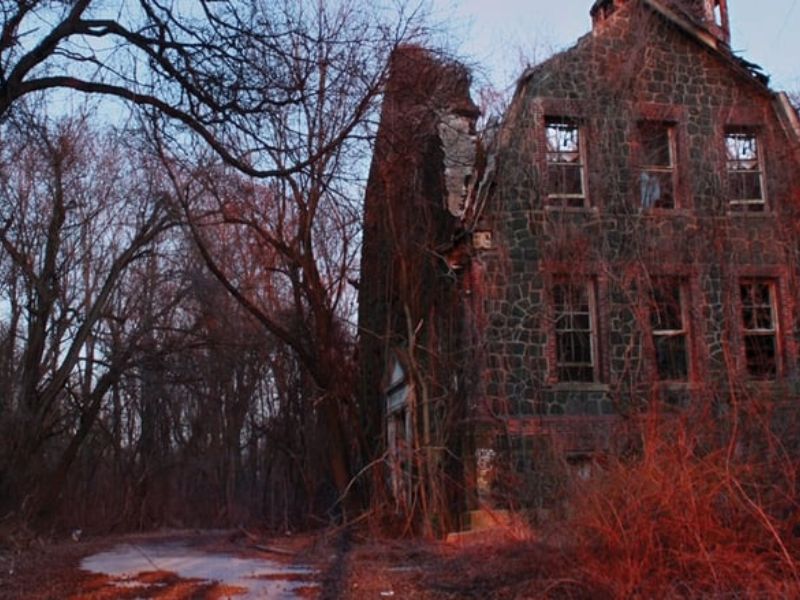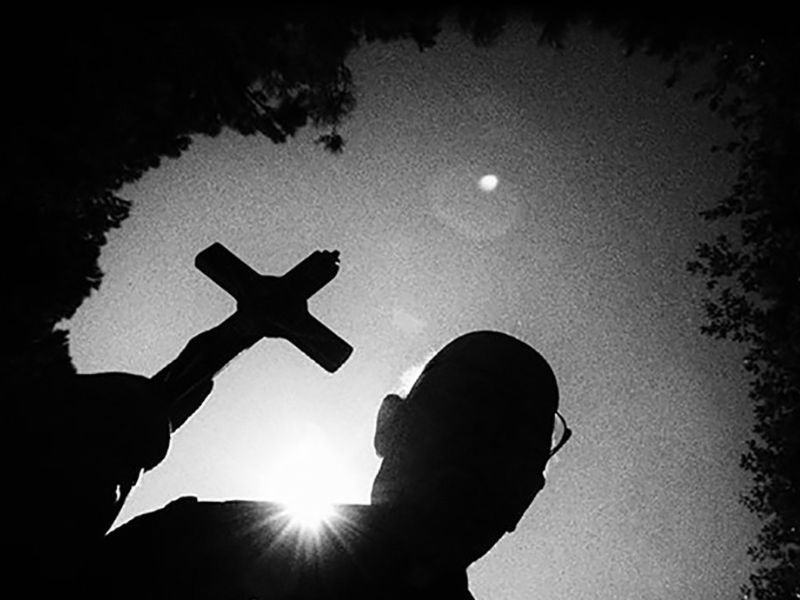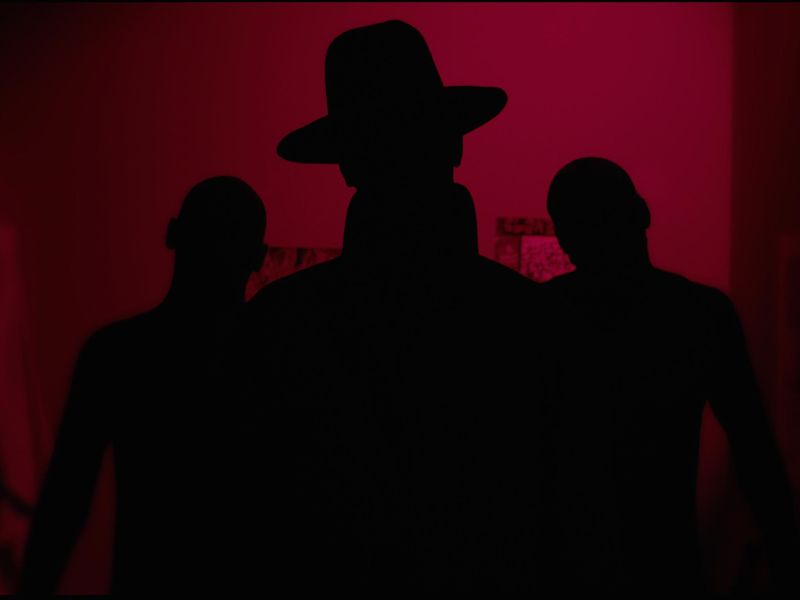Dok.cetera: The 5 Scariest Horror Documentaries to Watch This Halloween
It’s October, and that means Halloween is almost here. So as the weather dips and the leaves turn, it’s the perfect opportunity to gather some recommendations for the scariest horror documentaries to watch this Halloween season. Below are five of our favorite traditional documentaries that utilize horror techniques and inspirations in their subjects. But also, we’ve added a handful of fiction films that have done the opposite, appropriating the documentary form in unfolding their narratives.

Beware the Slenderman (dir. Irene Taylor Brodsky, 2016)
Slenderman was the definitive creepypasta meme of the early 2010s. A pop culture icon appearing in disparate digital realms, Slenderman is a black-suit-clad, faceless humanoid figure with unnaturally long arms and even longer fingers. His repertoire of nefarious activities tends to focus on children (mostly pre-teens) through general stalking, abductions, and violent acts. In 2014, those violent acts transcended the digital realm into the real world in the form of a near-fatal stabbing of a 12- year old girl by her two equally-aged friends. The event began something of a moral panic throughout American society, similar to the famed “Satanic Panic” of the 80s. In Irene Taylor Bordky’s 2016 documentary, Beware the Slenderman, the girl’s trial and subsequent panic are followed over 18 months. Featuring a toweringly frightening recreation of the titular character, interjected with various YouTube and video game footage of Slenderman exploits, the film is an early insight into the dangers of internet culture on impressionable (and perpetually bored) young minds. Though the Slenderman myth may have lost steam over the years, creepypasta and its viral reliance are still very much around with open source, multiplatform stories, as also effectively portrayed in the narratively challenging but obsessively fascinating We’re All Going to the World’s Fair (Jane Schoenbrun, 2021).

Cropsey (dir. Joshua Zemen, 2009)
A true horror documentary, Joshua Zemen’s 2009 Tribeca premiered Cropsey begins as an exploration of the local legend before turning into something much more sinister. The kind of film where the less said on its plot, the better, it follows the local Staten Island legend of Cropsey, a boogeyman-esque figure of New York city lore. The legend of Cropsey has featured in several 80s slasher films like The Burning (Tony Maylam, 1981) and Madman (Joe Giannone, 1982), but this documentary provides the x-factor ingredient in being a true story; one rooted in a series of 1980s child disappearances; disappearances that have led to a (true) serial killer suspect being tried, convicted and currently imprisoned. Still, as Cropsey unfolds, Zemen uncovers that there may be more to the story. Frequently found on true crime best-of lists, and stacked with an overall sense of nihilism amongst its overt horror aesthetics, ultimately, Cropsey is a subjective investigation into the power (and pain) of legend.

The Devil and Father Amorth (dir. William Friedkin, 2017)
William Friedkin holds a special place in the annals of possession cinema. His film, The Exorcist, kicked off the horror subgenre in 1973 with its host of sequels and spin-offs, creating a bonafide horror franchise (including the underrated Exorcist 3, which correctly boasts cinema’s greatest jump scare). However, Friedkin turns his hand to the documentary genre with The Devil and Father Amorth in this real-life encounter with demonic possession. The film follows Italian Catholic Priest and Diocese of Rome, Father Gabriele Amorth, who has performed thousand of exorcisms over his nearly 90-year life. In fact, Amorth was the chief exorcist of the Vatican until his death in 2016. The grainy, almost entirely hand-held film follows his attempts at exorcising a rural Italian woman for the ninth time. As much a study of the physiology of the human brain as it is the power of religion, The Devil and Father Amorth also leaves the door open for the possibility that the supernatural does, in fact, exist and that, in some form, the devil has always been among us.

Rats (dir. Morgan Spurlock, 2016)
Based on the best-selling book of the same name, Morgan Spurlock’s (Super Size Me) horror documentary Rats strikes at the musophobe in all of us. A worldwide journey that all too frequently goes deep beneath the surface to uncover man’s complicated relationship with the ubiquitous rodent. From New York City’s sewer systems to Cambodia’s food markets, the frequently stomach-turning documentary goes into particular gross-out territory in its depictions of extermination methods, including the neck-snapping of the Mumbai Night Rat Patrol. However, Spurlock hardly presents its subject matter as misunderstood or remotely safe in Rats. Instead, he focuses on the parasitic nature of the animal, the diseases they carry, and the places they can be found (you may think twice about sitting on the toilet in certain parts of the world after viewing this one). A trigger warning, however, if you, like me, are sensitive toward the treatment of animals.

The Nightmare (dir. Rodney Ascher, 2015)
With its subject matter inspired by Wes Craven’s seminal 1982 horror classic The Nightmare on Elm Street, Rodney Ascher’s (Room 237) The Nightmare is a frightening look through the genuine terror of sleep paralysis. Explored through eyewitness accounts of individuals from around the world, The Nightmare recreates their slumber demons through some big-budget level costume, makeup and effects work. As the body is rendered motionless in a sleep-induced state of terror and suffers from sleep paralysis, all offer an eerily similar description of the entity responsible, a longing, red-eyed demon of sorts. First appearing in the room’s corner or bed’s end, the nightmare always creeps closer, eventually inflicting a pain that, in many cases, can still be felt upon waking. The film’s title, dually inspired by the aforementioned Elm Street series, also shares its name with Swiss Artist Henry Fuseli’s 1781 oil painting, where a woman sleeps as a monkey-like demon sits on her chest, one of the earliest recollections of the condition. With The Nightmare‘s occult horror stylings and entirely relatable syndrome, our monsters are indeed under the bed.

Bonus – The Mockumentaries
Above are five traditional documentaries, but the season also calls for the shocks of another horror subgenre, the mockumentary. Unlike the found footage in the Paranormal Activity series or the recent Taiwanese Netflix terror fest Incantation, the mockumentary form offers effective thrills through its appropriation of documentary techniques within narrative storytelling. Admittedly, a genre with various degrees of success, there are a handful of engaging, effective, and somewhat obscure titles to choose from. Recommended here are Japan’s Noroi: The Curse (Kōji Shiraishi, 2005), which follows the mysterious disappearance of a paranormal writer, and the USA’s ultra-disturbing child serial killer investigation, The Poughkeepsie Tapes (John Erick Dowdle, 2007). But perhaps the best of the bunch is Australia’s Lake Mungo (Joel Anderson, 2008). Beginning as a family led investigation into the disappearance of one of its members, things start to change when a parapsychologist is brought in to investigate the disturbing audio and video recordings left behind.
"Came to Bucharest after living in Amsterdam & Brooklyn, among others, Steve is the industry editor for Modern Times Review documentary magazine.
